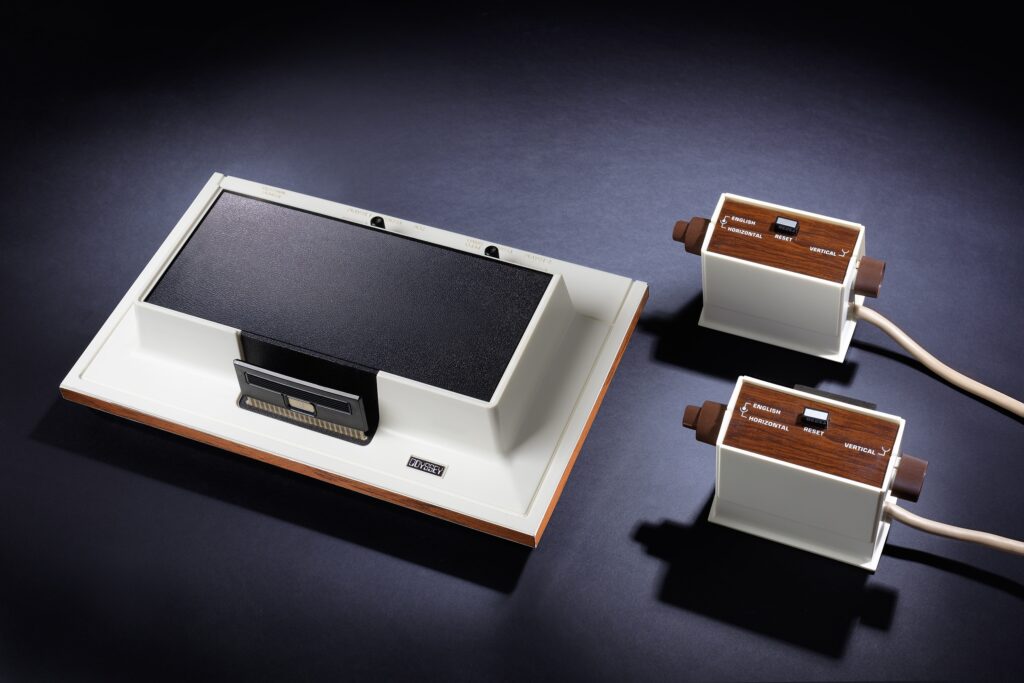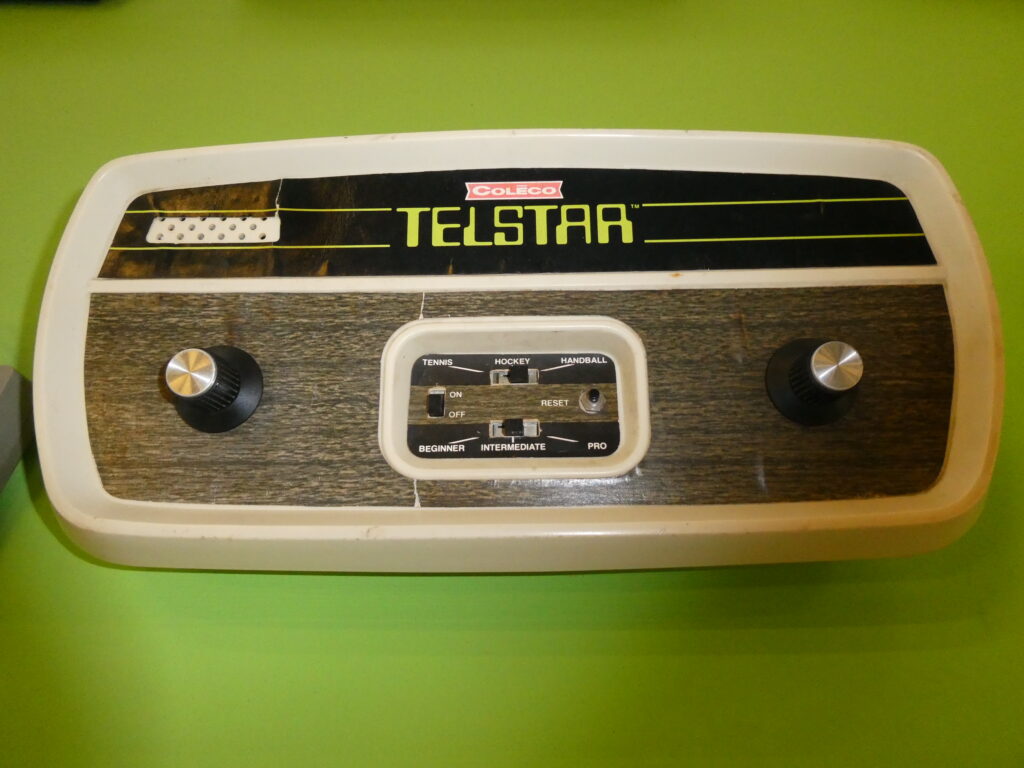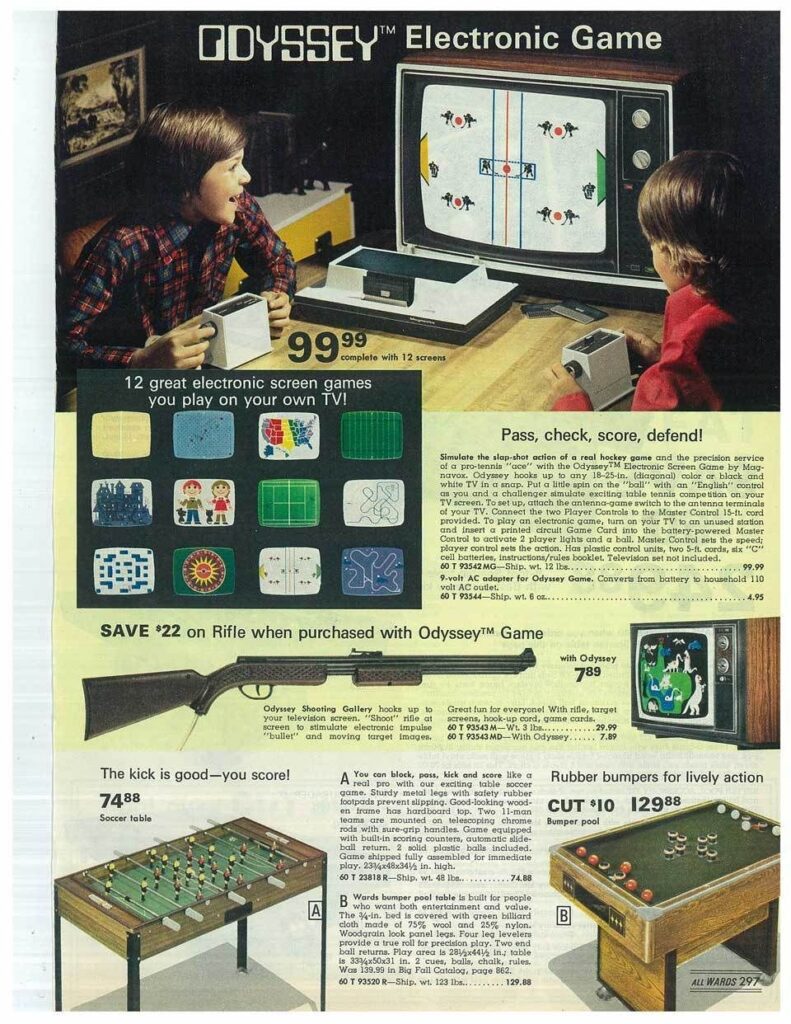In the last decade, video games have become a centerpiece of culture and a very popular hobby for many people across the globe. It all started with the first generation of video game consoles, way back in the late 1960s to the mid-1970s.
This period laid the foundation for the multi-billion-dollar industry we know today. The rudimentary technology of this era introduced the concept of playing video games on home television sets, marking the birth of interactive entertainment.
In this article, we want to explore the history, technical characteristics, and popular consoles and games from the first generation of video game consoles, all the while understanding how it has laid the foundation for the industry we have today.
This article is part of a complete series where we do a deep dive into each video game generation.
The first generation of video game consoles: a historical overview

The first generation of video game consoles began with Magnavox Odyssey in 1972, often considered the world’s first home gaming console. Designed by Ralph H. Baer, the “father of video games,” the Odyssey was revolutionary in its concept.
Unlike the complex graphics and storylines of today’s games, the Odyssey’s games were simple, mostly involving blocky on-screen elements that required players to use overlays placed on their TV screens for visual context. Despite its limited capabilities, the Odyssey marked the beginning of home video gaming.
While Magnavox Odyssey is often credited as the first home console, the idea of video gaming actually started earlier. Devices like Tennis for Two (1958) and Spacewar! (1962) were arcade-based or experimental, but these precursors set the stage for later home consoles.
Pong, developed by Atari and released in 1972, was another milestone in this era. Originally an arcade game, Pong’s home version became a cultural phenomenon and helped solidify the viability of video games as a mainstream form of entertainment.
Technical characteristics of first-generation consoles
The first generation of video game consoles was vastly different from what we are accustomed to today. These systems relied on discrete transistor-based logic, with no microprocessors, a far cry from the highly advanced processors in modern consoles.

Graphics were black-and-white, and there were no real sound effects or intricate animations. Games were built directly into the hardware or used cartridges that contained circuits to modify the console’s functions rather than store software as in later generations.
One of the most notable curiosities from this generation was how game graphics were sometimes supplemented by real-world objects.
The Magnavox Odyssey, for example, included plastic overlays that players would place on their TV screens to simulate the appearance of actual game environments. This was a creative, if primitive, solution to the limitations of the technology at the time.
Additionally, many first-generation consoles were released with dedicated controllers that only worked with specific games, such as paddle controllers for Pong-like games. These controllers were built into the consoles and often couldn’t be swapped out or modified, contrasting with the more flexible and multipurpose gamepads introduced in later generations.

Read also: The first 3D game – a history of 3D game development
Consoles of the first generation
This period was the home video game market’s infancy, companies like Atari, Coleco, and Magnavox were just beginning to experiment with different ways to bring arcade-style gaming into the home.
While the technology was basic, the idea of playing games on a personal television set was novel and exciting, and it paved the way for the development of more advanced systems in the future.
Several consoles besides the Magnavox Odyssey and Atari’s Pong emerged during this generation, each contributing to the early evolution of gaming in unique ways. Some of the most notable consoles include:
- Coleco Telstar (1976): Known for its affordability, the Coleco Telstar was another dedicated console focused on games like Pong and its variations. It sold in large numbers, proving there was a growing market for home gaming.
- Home Pong (1975): Released by Atari, this home version of Pong was a commercial success and led to the rise of Atari as a dominant force in the early video game industry.
- Color TV-Game (1977): This was Nintendo’s first foray into video games, marking the company’s initial step into the market it would eventually dominate. The Color TV-Game series featured basic games similar to Pong, and it was a key part of Nintendo’s transformation from a toy company into a video game giant.
These consoles were dedicated systems, meaning they could only play a small set of games, often built into the hardware itself. Interchangeable cartridges, a hallmark of future generations, were largely absent in this era, except for the Magnavox Odyssey’s limited use of external game cards.

Games of the first generation
Most games in this era were incredibly simple by today’s standards, but they were groundbreaking at the time.
The original Odyssey came with games like Table Tennis and Ski, both of which required players to manually track scores, as the console had no digital score-keeping system. As we mentioned, Atari’s Pong is the standout title from this generation, with its straightforward tennis-like gameplay becoming a household favorite.
Another interesting title from the first generation was Odyssey’s Shooting Gallery, which used a light gun, one of the earliest examples of this type of peripheral. The idea of using physical devices to enhance gameplay was innovative and foreshadowed the future use of light guns in games like Duck Hunt on the NES.
The legacy of the first generation of video game consoles
While the first generation of video game consoles may seem primitive today, it was essential in establishing many of the gaming principles we still use.
The introduction of home consoles brought video gaming from arcades into living rooms, making it more accessible to the general public. Companies like Atari and Nintendo would go on to dominate the video game market in future generations, but their roots can be traced back to this early period of experimentation and innovation.
You may also like: Why video game sprites remain popular

The first generation of video game consoles also sparked the first video game legal battles – such as the lawsuit between Magnavox and Atari over the similarities between Pong and the Odyssey’s table tennis game.
This legal dispute resulted in Magnavox winning a settlement and licensing fees from Atari, a reminder that even the earliest days of gaming were marked by competition and intellectual property concerns.
The first generation of video game consoles set the stage for what would become a thriving global industry. While the technology was limited and the games were basic, the innovations of this era sparked a wave of creativity and enthusiasm for gaming.
The simple joy of playing games like Pong or Table Tennis on a TV screen has evolved into the complex, immersive gaming experiences we enjoy today. Without the humble beginnings of the first generation, none of it would have been possible, and the simplicity of the nostalgia of the first generation still holds to this day.
We here at Main Leaf love the style and aesthetic of the first generation!
We also understand its importance for the industry, since many developers learn to develop their first games still following the same simple design principles. And if you are one of these developers who are just starting your first project, you can count on us to help with any part of the development!
If you liked this article, check out our blog for many others relating to the world of video games and video game development.

